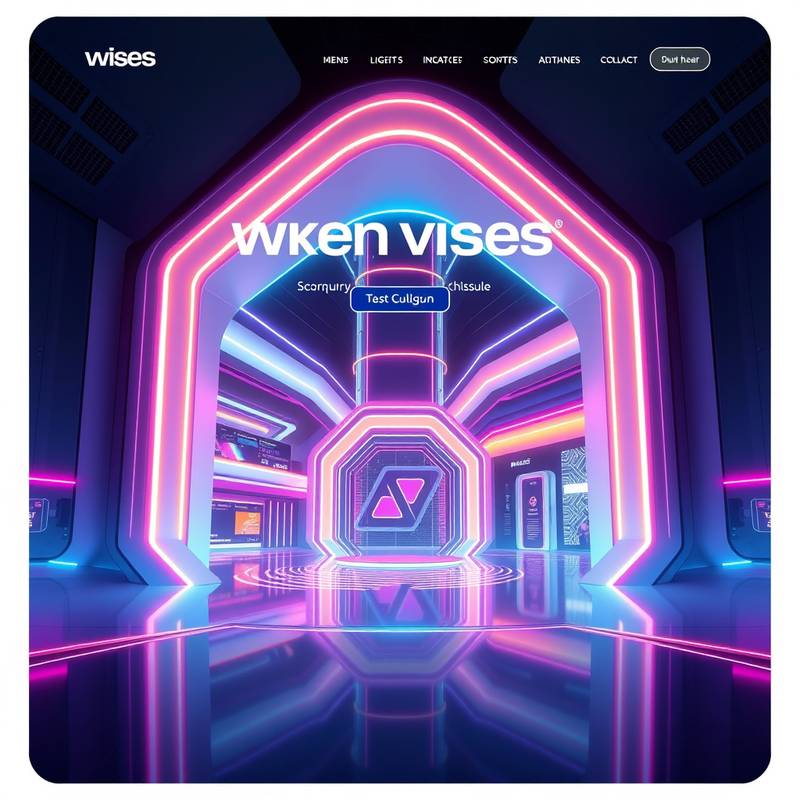
Minimalist Design Trends Taking Over 2024
Published on January 15, 2024 by Design Academy
Minimalism continues to reign supreme in the design world. In 2024, we're seeing a refined approach to simplicity, focusing on clean lines, ample white space, and strategic use of color. Typography plays a crucial role, with designers opting for bold, legible fonts that make a statement without overwhelming the senses. This year’s minimalist trend also embraces accessibility, ensuring designs are easy to navigate and understand for all users. Large, clear call-to-actions and intuitive layouts are key to creating a seamless and enjoyable user experience. Furthermore, the use of subtle animations and micro-interactions adds a touch of sophistication and interactivity to minimalist designs, making them more engaging and memorable.
The color palettes are generally muted, featuring neutral tones complemented by pops of vibrant, accent colors. This creates a visually appealing contrast that draws attention to key elements. Designers are also incorporating natural textures and organic shapes to add warmth and depth to minimalist designs, moving away from purely sterile and clinical aesthetics. This approach helps to create a more inviting and human-centered design. The focus remains on functionality and user experience, prioritizing content and usability above all else. In essence, minimalist design in 2024 is about doing more with less, creating impactful designs that are both visually stunning and incredibly practical.
Read More

The Undeniable Importance of UI/UX Design in Modern Businesses
Published on February 22, 2024 by Design Academy
In today's digital landscape, UI/UX design is no longer a luxury but a necessity for businesses striving to succeed. User Interface (UI) design focuses on the visual elements and interactive aspects of a product, ensuring it is aesthetically pleasing and easy to navigate. User Experience (UX) design, on the other hand, delves deeper into understanding user behavior, needs, and motivations to create a seamless and satisfying journey. Together, UI/UX design significantly impacts customer satisfaction, brand loyalty, and ultimately, a company's bottom line.
A well-designed UI/UX can drastically reduce bounce rates, increase conversion rates, and improve customer retention. By providing a user-friendly and intuitive experience, businesses can encourage users to spend more time on their platform, explore more features, and ultimately make more purchases. Furthermore, positive user experiences often lead to word-of-mouth referrals and positive reviews, which can significantly boost a brand's reputation. Investing in UI/UX design is an investment in the future of the business, ensuring it remains competitive and relevant in a constantly evolving market.
Moreover, accessibility is a crucial aspect of UI/UX design. Designing for users with disabilities not only broadens the audience but also improves the overall usability for all users. Adhering to accessibility guidelines ensures that products are inclusive and cater to a diverse range of needs. By prioritizing accessibility, businesses demonstrate a commitment to social responsibility and enhance their brand image. Effective UI/UX design is a holistic approach that considers every aspect of the user journey, from initial discovery to long-term engagement. It is a critical component of any successful digital strategy.
Read More

Predicting the Future: Key Trends Shaping Web Design
Published on March 10, 2024 by Design Academy
The world of web design is constantly evolving, driven by technological advancements, changing user expectations, and emerging design philosophies. As we look ahead, several key trends are poised to shape the future of web design. One of the most significant is the increasing importance of artificial intelligence (AI) and machine learning (ML). These technologies are being integrated into web design to personalize user experiences, automate tasks, and enhance overall efficiency.
AI-powered chatbots are becoming more sophisticated, providing instant customer support and guiding users through complex processes. ML algorithms are analyzing user behavior to predict their needs and preferences, allowing websites to tailor content and recommendations accordingly. This level of personalization is becoming increasingly expected by users, and web designers are leveraging AI and ML to deliver it effectively. Another key trend is the rise of immersive experiences through virtual reality (VR) and augmented reality (AR). While these technologies are still in their early stages of adoption, they have the potential to revolutionize the way users interact with the web.
Web designers are exploring ways to incorporate VR and AR into their designs, creating interactive and engaging experiences that go beyond traditional website formats. Furthermore, the demand for faster and more responsive websites is driving the adoption of technologies like progressive web apps (PWAs) and accelerated mobile pages (AMP). PWAs offer app-like functionality within a browser, providing a seamless and engaging user experience across devices. AMP optimizes web pages for mobile devices, ensuring they load quickly and efficiently, even on slow internet connections. As mobile usage continues to grow, these technologies are becoming essential for delivering a positive user experience.
Read More


